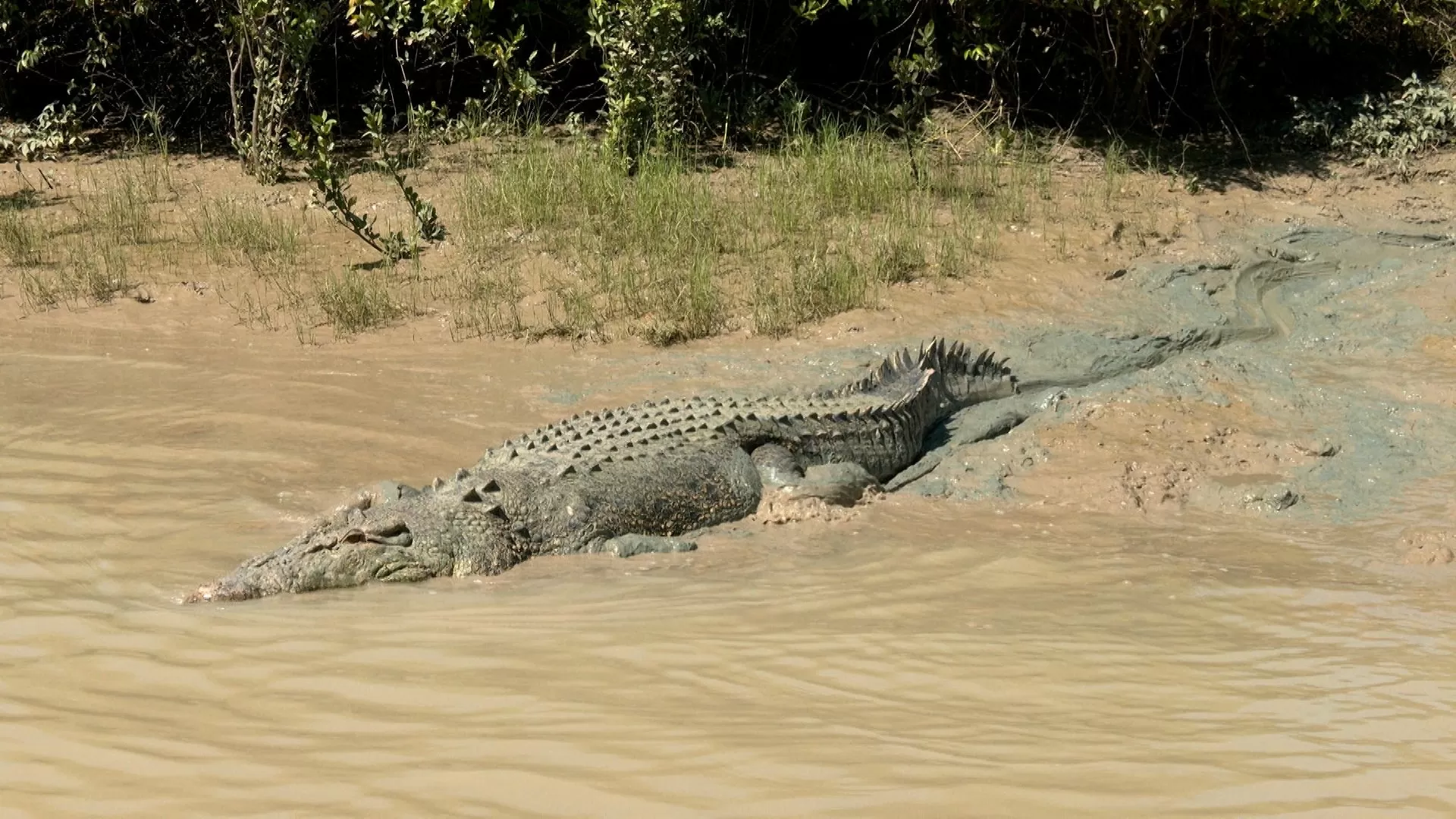In the northern rivers and estuaries of Australia, one can find a primeval creature that has roamed the Earth for millions of years – the saltwater crocodile. Despite its fearsome reputation, this creature is a vital part of the ecological balance in its habitat. And on a quiet day, if you are lucky, you may catch a glimpse of this majestic beast as it lies, mostly submerged in the muddy waters, with only its ochre eyes visible above a triangular snout.
As you venture out into the river, you can feel the thrill of being in the presence of one of the largest reptiles in the world. The saltwater crocodile, also known as the estuarine crocodile, can grow up to 7 meters in length and weigh up to a ton. Its mottled yellow-green and brown skin, perfectly camouflaged in the murky waters, is a testament to its adaptability and survival skills.
These creatures are apex predators, and their powerful jaws can crush the bones of their prey with ease. But don’t let their powerful exterior fool you. Saltwater crocodiles are also incredibly intelligent and possess exceptional sensory capabilities. They have excellent eyesight and can see both above and below the water. Their sense of smell and hearing are also highly developed, making them efficient hunters.
But despite their fierce nature, saltwater crocodiles are integral to the ecosystem. These creatures play a vital role in maintaining the balance of their habitat. They feed on a wide variety of prey, including fish, turtles, birds, and even other crocodiles. This keeps the population of these species in check, preventing overpopulation and preserving the delicate ecological balance.
Moreover, saltwater crocodiles have a unique nesting behavior that contributes to the overall health of their habitat. Female crocodiles build their nests out of vegetation and mud, where they lay their eggs. These nests provide a safe haven for other animals, such as birds and insects, to build their homes. And when the eggs hatch, the young crocodiles provide a valuable food source for other predators, ensuring the survival of those species.
But the survival of the saltwater crocodile has not always been so assured. Due to excessive hunting and habitat loss, these creatures were once on the brink of extinction. However, thanks to conservation efforts, their population has now rebounded, and they are no longer considered an endangered species. Today, the saltwater crocodile is a symbol of resilience and adaptability, showing that with proper conservation measures, any species can make a comeback.
Australia’s Northern Territory is one of the best places to observe saltwater crocodiles in their natural habitat. Here, you can take a river cruise or a guided tour to get an up-close experience with these magnificent creatures. These tours are led by experienced guides who not only ensure your safety but also provide valuable information about the crocodiles and their habitat.
And if you are feeling a little more adventurous, you can even opt for a crocodile cage diving experience. This once-in-a-lifetime opportunity allows you to get up close and personal with the crocodiles, separated only by a strong metal cage. You can observe their behavior, listen to their powerful roars, and even feed them under the watchful eye of your guide.
But the most important thing to remember when encountering saltwater crocodiles is to always respect their space. These creatures are wild and unpredictable, and it is essential to follow safety guidelines to avoid any accidents. By following these guidelines, you can enjoy a thrilling and educational experience while also ensuring the well-being of these magnificent creatures.
In conclusion, the saltwater crocodile is a creature that demands respect and admiration. Its powerful presence and vital role in the ecosystem make it a symbol of Australia’s natural heritage. So, the next time you find yourself in the muddy waters of an Australian river, keep your eyes peeled for a mottled yellow-green and brown creature with ochre eyes – the mighty saltwater crocodile.








